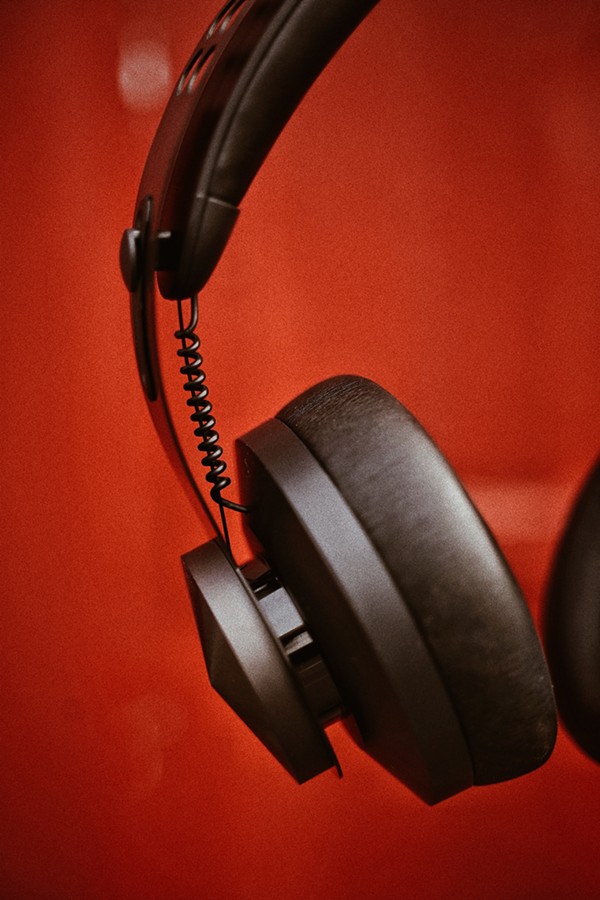What I learned from spinning 259 unfamiliar albums during the pandemic

The pandemic upended our lives this year, dealing us anxiety and shifting our normal routines. Many of us took refuge in the comfort of beloved albums or songs, because nothing lifts you up like something from your “Favorites” playlist.
I chose not to have that kind of listening year.
I began the year by simply keeping a list of 2020 releases that I heard, not expecting that the plague would come along and change everything. Since we all needed pandemic goals, I switched things up a bit and asked, “What would happen if I spent 2020 listening to as many unfamiliar albums as I could?”
The rule was simple: an album (or concert recording) would count if I hadn’t listened to it as a whole. Even if I knew a handful of songs, I rationalized, I’d never taken it in start-to-finish. This allowed me to slip in Fleetwood Mac’s Rumors, for example, despite knowing all but a handful of tunes.
In the end, I spun 259 new-to-me albums and came away with a handful of observations about the current state of music. Of those I explored, 90 were from 2020. The rest came from earlier years, the oldest being a Glenn Miller live album from 1939.
For one observation, it turns out dystopian visions produced by genre-mixing provided a fertile ground for innovation on some of 2020’s best releases, including Wake’s Devouring Ruin, Protest the Hero’s Palimpsest, Pure Reason Revolution’s Eupnea and Grimes’ Miss Anthropocene.
No more safety blanket
In the same way the pandemic tossed routines out the window, this listening process ended the emotional safety blanket of music. Many of us define our musical tastes in high school, college or maybe our mid-to-late 20s. I still enjoy old favorites, and still listened to them this year, despite my listening project.
“Music’s repetitiveness is at once entirely ordinary and entirely mysterious,” writes music cognition researcher Elizabeth Hellmuth Margulis in her book On Repeat: How Music Plays the Mind. “The radio is full of songs whose choruses repeat again and again, and these repetitive songs get downloaded and replayed over and over.”
As the year unfolded, I found myself wondering whether I was missing some growers, since I heard many albums just once. Part of the reason I was able to take in such a volume is that music was so much more expensive prior to the birth of downloading and streaming. If you dropped $20 on a CD, you were going to damn well listen a few times.
Finding favorites
Two of my most-listened-to favorites from 2020 were new albums from Pearl Jam and Phish, acts with whom I have had long-time love affairs. Phish’s new album, Sigma Oasis, is the band’s best in almost two decades. However, the songs had all been available on live bootlegs. So, even in trying to escape repetition, my mind sneakily found it.
Since I worked from home, I did essentially no driving starting in March. Consequently, much of my listening was via headphones, and I found myself gravitating to instrumental music.
Perhaps the escape wasn’t as emotional as a familiar lyric, but instrumental music allows the listener room to breathe while — if done well — being enveloped in a world as detailed and foreign as Game of Thrones’ Westeros. Jazz, and improvisation in general, relies on the musicians developing their own language. So, seeing the best players as Tolkienesque isn’t the biggest stretch. Improvisation is the enemy of repetition.
Two of the best instrumental releases of this year I discovered — Arcing Wires’ Prime and Tigran Hamasayan’s The Call Within — found new ways of speaking jazz in the language of progressive rock, while Krust’s The Edge Of Everything looked backward to the drum-and-bass sound of yesteryear to shine a light in the dark.
But it wasn’t just improvisation that held an allure. I found myself invested in electronic music as well, likely for the same reasons. In it, there was no COVID-19, no Trump, no anything. Just beats and synthesizer swooshes.
No more tentpoles
Maybe it’s because Gen X never outgrew it, but pop culture seems to cut a wider swath than it did back in the MTV days. The ’80s never went away in the same way the ’50s or ’60s did.
In the ’80s and ’90s, you could look at a list of “best albums” from the given year and be familiar with most of them. The 2020 lists have been filled with albums most us likely have never heard. This year’s Grammy albums? Not a clue. Pitchfork’s best of the year? Who? Am I just old and out of touch? (Don’t answer that one.) How many records would a person have to hear to capture the year?
The answer to that last question seems to be “too many,” particularly outside of any one genre.
The barriers for entry to music have been lowered due to the widespread availability of recording equipment and the end of major label dominance. The result is that the amount of music has increased exponentially, but concept of “tentpole” albums has been all but eliminated, at least within the realm of rock.
You’ve still got your Kanyes, Beyoncés and Taylor Swifts, of course, but far fewer albums seem to loom over the culture at large. Even gossip sites like TMZ seem to give as much digital ink to tech bros like Elon Musk and Mark Zuckerberg as they do high-profile pop artists such as Drake.
The big takeaway from my 2020 experiment is that “best of” lists are truly no different than curated Spotify playlists, which is to say they simply reflect the creator’s preferences, essentially no different than some guy on the bus saying, “Hey, check this out.”
Did I have my favorites? Hell yes. Are they the objective “best” records? I’ll defer to you on that one. You’re on your own in this brave new world. Whether it’s an algorithm or that random friend offering a recommendation, dive in. Choose your cliche: world-oyster, kid-candy store or whatever.
Stay on top of San Antonio news and views. Sign up for our Weekly Headlines Newsletter.

















